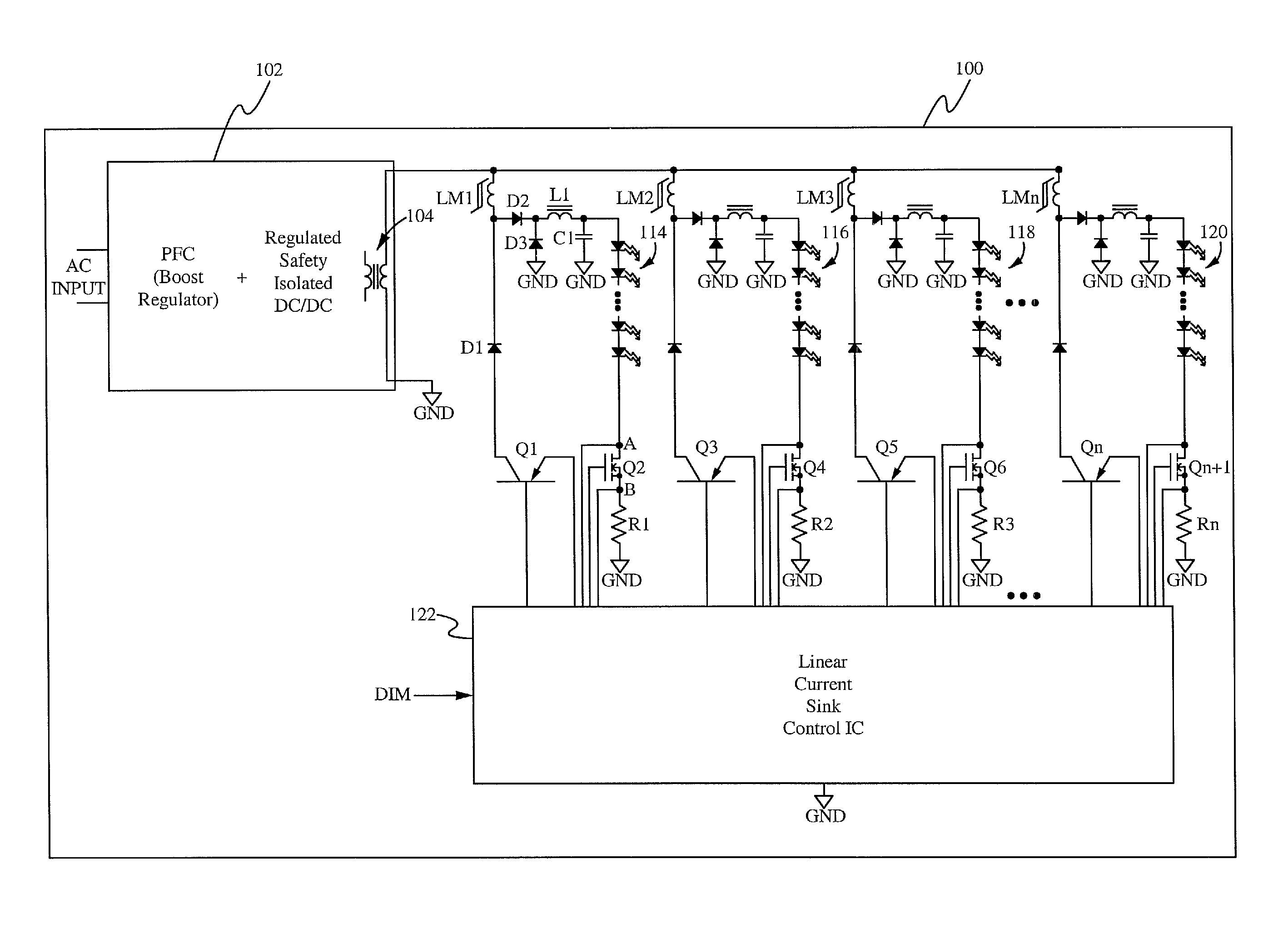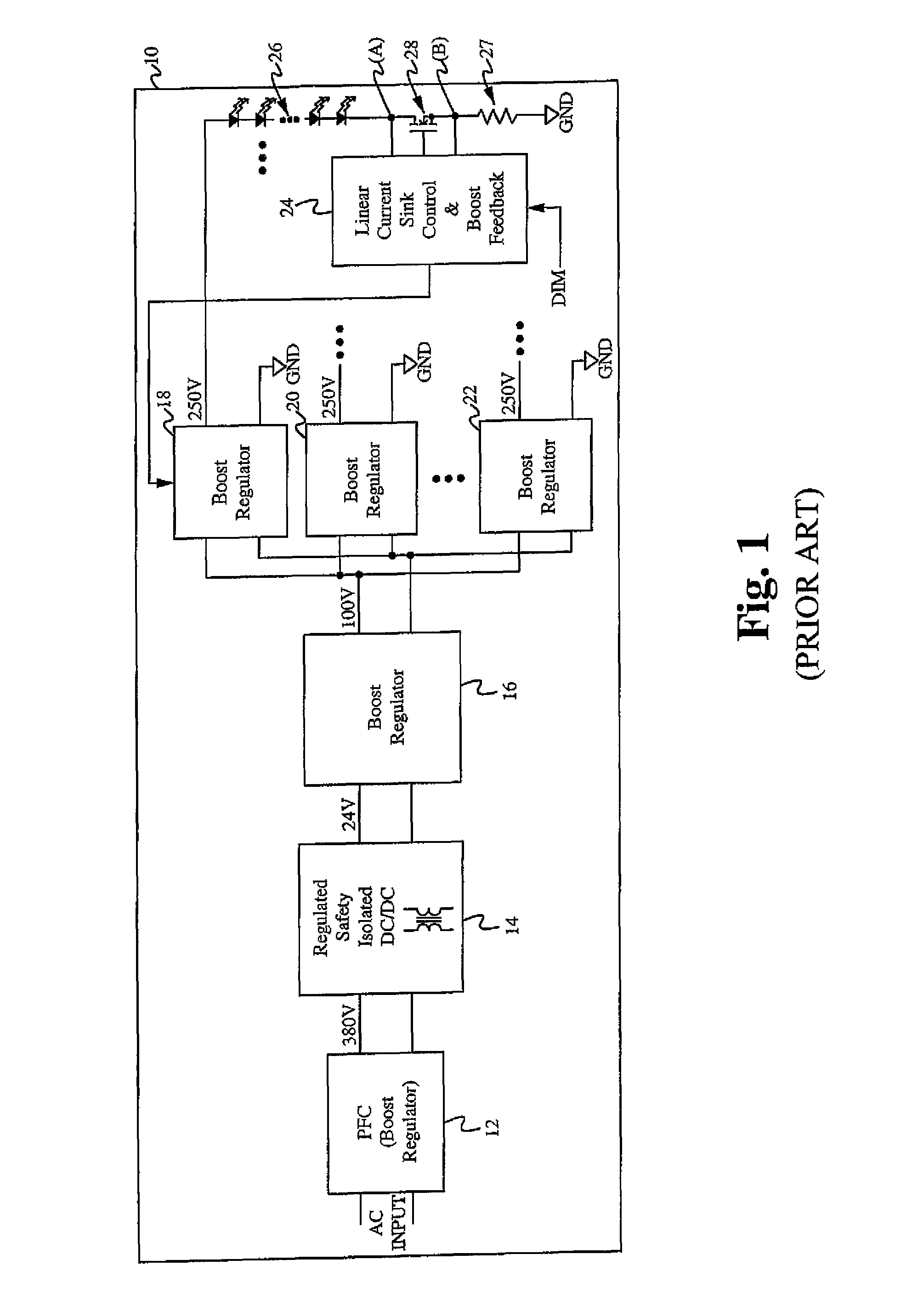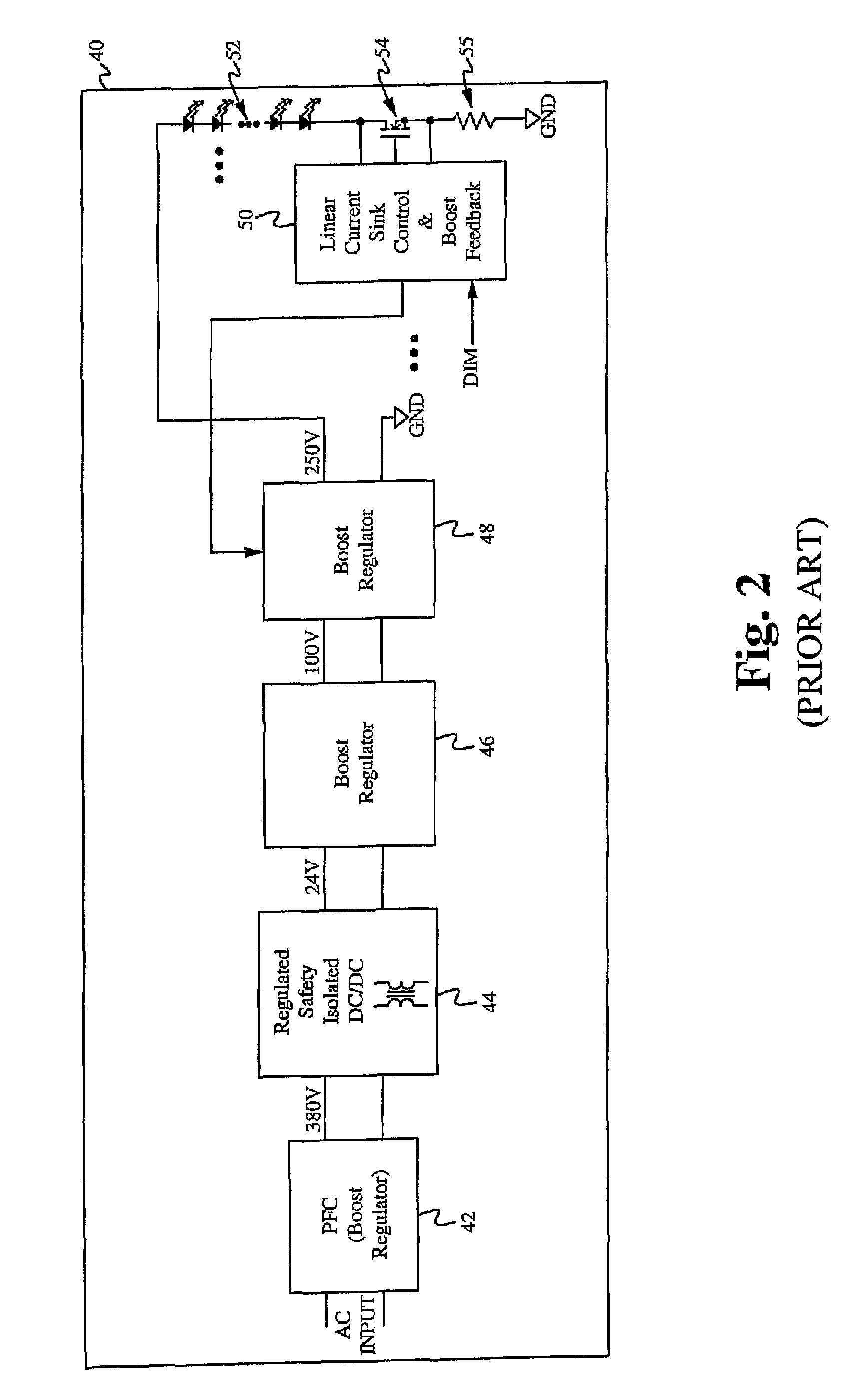Magnetic amplifier assisted LED constant current sink overhead voltage regulation
a technology of constant current sink and magnetic amplifier, applied in the direction of electric variable regulation, process and machine control, instruments, etc., can solve the problems of difficult to provide the driving function of ccfls, long operating life of leds and drawbacks, etc., to achieve the effect of maximizing efficiency
- Summary
- Abstract
- Description
- Claims
- Application Information
AI Technical Summary
Benefits of technology
Problems solved by technology
Method used
Image
Examples
first embodiment
[0031]FIG. 3 illustrates a conceptual block diagram of a power circuit according to a The power circuit 100 includes a power conversion module 102, a plurality of magnetic amplifiers LM1-LMn, a plurality of LED strings 114-120, a plurality of transistors Q1-QN+1, and a linear current sink control circuit 122. For simplicity, only the circuit configuration and operation related to the LED string 114 is described below. The configuration and operation of the circuitry coupled to the remaining LED strings 116, 118, 120 are the same as that described related to the LED string 114.
[0032]One magnetic amplifier is coupled to one LED string, for example the LED string 114 is coupled to the output of the magnetic amplifier LM1. A rectifier circuit including a diode D2, a freewheeling diode D3, a filter inductor and filter L1, and a filter capacitor C1 is coupled between the magnetic amplifier LM1 and the LED string 114. In some embodiments, the diode D3 and the filter inductor and filter L1...
second embodiment
[0049]FIG. 13 illustrates a conceptual block diagram of a power circuit 200 according to a The power circuit 200 is similar to the power circuit 100 of FIG. 3 except that the reset current source and current sink for each LED string are integrated into the control circuit. Specifically, the control circuit 222 includes the functionality of the control circuit 122 as well as the reset current sources (transistors Q1, Q3, Q5, QN) and the current sinks (transistors Q2, Q4, Q6, QN+1) of the power circuit 100. In some embodiments, the control circuit 222 is a high voltage all analog circuit having no switching PWM control circuitry.
[0050]The power circuits are described above as including a current sink coupled to each LED string to regulate the current through the LED string. In some embodiments, the current through the LED string may be directly regulated by the magnetic amplifier itself, in which case the current sink transistor is only used as a dimming ON-OFF switch. One reason for...
PUM
 Login to View More
Login to View More Abstract
Description
Claims
Application Information
 Login to View More
Login to View More - R&D
- Intellectual Property
- Life Sciences
- Materials
- Tech Scout
- Unparalleled Data Quality
- Higher Quality Content
- 60% Fewer Hallucinations
Browse by: Latest US Patents, China's latest patents, Technical Efficacy Thesaurus, Application Domain, Technology Topic, Popular Technical Reports.
© 2025 PatSnap. All rights reserved.Legal|Privacy policy|Modern Slavery Act Transparency Statement|Sitemap|About US| Contact US: help@patsnap.com



